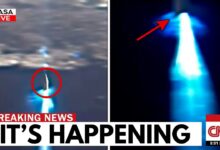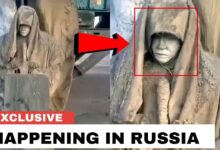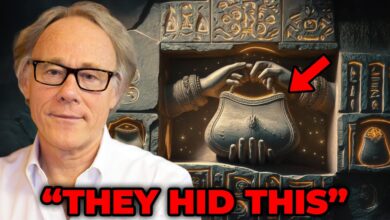Scientists Finally Solved The Roanoke Colony Mystery In 2025

The Mystery of the Lost Roanoke Colony Finally Solved in 2025
In 1587, three English ships landed on Roanoke Island, off the coast of what is now North Carolina. 115 men, women, and children set foot on the new land in hopes of making a start. Leading them was John White, the grandfather of Virginia Dare, the first English child born in America.
However, when White returned to England to seek aid, he was stranded for three years because of a war with Spain. When he returned in 1590, he found the colony completely gone, leaving only the word “Croatoan” carved into a pillar – the name of a nearby island with friendly native inhabitants.
There were no bodies, no signs of conflict, or hasty departures. The story of Roanoke became one of America’s greatest mysteries—until modern research began to reveal the truth.
In 2012, an ancient map drawn by John White himself was discovered with a hidden symbol: a square fort 50 miles west of Roanoke—matching records that the colonists planned to move inland. Led by archaeologist Nick Luccketti, the First Colony Foundation excavated “Site X”—and found 16th-century British pottery, suggesting that the British had lived there, not just stayed there.
Two miles away, at “Site Y,” the artifacts were even richer—European pottery from a variety of regions—revealing a cultural mix that may have been caused by the British mingling with native tribes.
Meanwhile, on Hatteras Island (ancient Croatoan), an archaeological team led by Mark Horton and Scott Dawson discovered British artifacts such as sword hilts, guns, and writing tablets inscribed with English – clear evidence that the British had lived on the island. Local legends about white people intermarrying with the natives are no longer fiction.
These discoveries have led to a new theory: Roanoke did not disappear – they dispersed, adapted, and assimilated to survive. DNA analysis of the local native community even revealed genetic traces from Europe – dating to the time when the Roanoke colony disappeared.
However, not everyone agrees. Some researchers warn of the risk of misinterpretation, emphasizing the need to distinguish between evidence and speculation.
Still, the Roanoke story is slowly being reframed: not as a failure or a disaster, but as a story of survival—a forgotten early chapter in American history.

Leaving the original refuge would have been suicidal. But even within the First Colony Foundation, which spearheaded the search, there was no consensus. One camp favored the split theory: some sought refuge with friendly coastal tribes, others ventured further inland. The other camp rejected the inland route altogether, arguing that the European artifacts that had been found might simply belong to earlier expeditions, perhaps a pre-dawn advance party before the 1587 settlement.
But the artifacts told a more ambiguous story: a silver ring engraved with a lion, a rapier hilt, and ceramic fragments that were clearly of European origin and chemically matched to a 16th-century English kiln. Enough to pique curiosity, but not enough to say anything for certain. Over time, though, skepticism gave way to belief. New technologies like ground-penetrating radar, drone-assisted mapping, and DNA analysis have become new tools for archaeologists. Radiocarbon dating has become more precise, soil analysis more detailed. And artifact by artifact, year by year, the evidence has quietly accumulated—like whispers of the past that refuse to be forgotten.
Until 2025, those whispers have become a roar. The 2025 breakthrough began on a barren patch of land near the banks of the Choan River, just a few miles from the mysterious “Site X.” On a chilly February morning, the First Colony Foundation excavation team didn’t expect to make a big discovery—until they found her. The grave bore the unmistakable marks of a Christian burial: the skeleton was lying on its back, head to the west, feet to the east—traditionally symbolizing the hope of resurrection under the sun. There were no burial objects or decorations, just bones, worn but intact. There was a quiet dignity to the way she was laid to rest.
What changed everything was the DNA analysis. Mitochondrial samples showed she was of European descent – and a woman. The discovery stunned the group. The all-male 1585 expedition had been excluded. The Jamestown settlers arrived years later, and there was no record of them venturing inland. This woman had not come with the expedition – she had lived and died here. Which meant: she was not alone.
For centuries, the phrase “lost colony” conjured up images of a community vanishing without a trace, swallowed up by the jungle. But this grave rewrote the story – the moment it was unearthed. “It’s terrifying,” one archaeologist said quietly through tears, “not just because we found her, but because now we know – there were others.” They didn’t disappear. They weren’t wiped out. They moved. They adapted. They survived.
Now the fragments of history point in two directions – and to two different fates. Archaeological and linguistic evidence increasingly supports the split-migration theory. It seems that, under the pressure of a harsh and alien world, the settlers once united in their dream of building a new England, broke apart. One group – perhaps the most pragmatic – headed southeast to Hatteras Island. Here, among the Croatans, they may have found a fragile refuge. British-style tools, European pottery, and even genetic traces among indigenous descendants all support this theory.
The Croatans, known for their tolerance, may have allowed the exiles to assimilate, though at the cost of cultural loss on both sides. This was not an integration driven by ambition, but a quiet surrender to circumstances. The remaining group seems to have gone deep into the Medqu jungle – perhaps in search of freedom, a new start, or simply to disappear. Inland, they shunned the rescuers – but also fell off the historical map. The decision, most likely, was not strategic or ideological – but simply a matter of survival.
They were ravaged by too many invisible enemies: droughts that withered crops, incurable diseases, famines that tested the moral compass. Add to that the constant fear of attack from natives or Spanish forces, and the greatest threat of all – internal disunity. Fear eroded trust faster than any enemy. And when trust broke down, so did the colony. They ran – not together, but in loose threads: some to the sea, some to the woods – and all disappeared.
The Lost Colony – the “Lost Colony” – is not just a mystery, but a metaphor written in invisible ink. For centuries, we have regarded it as a forgotten curiosity in textbooks. But the story of Roanoke is a silent American beginning – not because it is unimportant, but because its voices are too small, silenced by time, nature, and indifference. Yet in that silence lies a story of great depth:
This is a story about survival – and the cost. About how cultures collide and dissolve. About the fragility of memory in a world without monuments, without tombstones – the only sign is the word Croatoan, carved into the ruins of a dream. The scary thing is not that we don’t know – it’s that we barely bother to ask. Hundreds of years passed, while this mystery lay silent in tree roots and riverbeds. But in 2025, science spoke up. Genetic testing, ground-penetrating radar, linguistic analysis – all together confirmed what oral tradition had tried to preserve: they weren’t lost. Not really. We just stopped listening.
And what almost got lost wasn’t just a colony – it was our ability to remember. Our ability to care, to connect the faint footprints to the people who made them. Because if the first Americans could be erased from history so easily – who else has been forgotten? That is the real legacy of Roanoke. Not its disappearance – but the ease with which we let history go.








